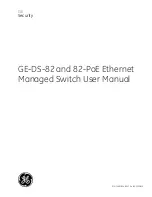
NOTE
l
TCN BPDUs are used to inform the upstream device and root bridge of topology changes.
l
Configuration BPDUs with the TCA bit set to 1 are used by the upstream device to inform the
downstream device that the topology changes are known and instruct the downstream device to stop
sending TCN BPDUs.
l
Configuration BPDUs with the TC bit set to 1 are used by the upstream device to inform the downstream
device of topology changes and instruct the downstream device to delete MAC address entries. In this
manner, fast network convergence is achieved.
6.2.5 Improvements in RSTP
In 2001, IEEE 802.1w was published to introduce the Rapid Spanning Tree Protocol (RSTP),
an extension of the Spanning Tree Protocol (STP). RSTP was developed based on STP and
makes supplements and modifications to STP.
Disadvantages of STP
STP ensures a loop-free network but has a slow network topology convergence speed, leading
to service quality deterioration. If the network topology changes frequently, connections on the
STP network are frequently torn down, causing frequent service interruption. This is
unacceptable to users.
STP has the following disadvantages:
l
STP does not distinguish port states and port roles clearly, making it difficult for less
experienced administrators to learn and deploy this protocol.
A network protocol that clearly defines and distinguishes different situations outperforms
the others that fail to do so.
–
Ports in the Listening, Learning, and Blocking states are the same to users because they
are all prevented from forwarding service traffic.
–
From the perspective of port use and configuration, the essential differences between
ports lie in the port roles rather than port states.
Both root and designated ports can be in Listening state or Forwarding state, so the ports
cannot be distinguished by their states.
l
The STP algorithm determines topology changes after the timer expires, which slows down
network convergence.
l
The STP algorithm requires that the root bridge should send configuration BPDUs after
the network topology becomes stable, and other devices process and spread the
configuration BPDUs to the entire network. This also slows down topology convergence.
Improvements Made in RSTP
RSTP deletes three port states, defines two new port roles, and distinguishes port attributes based
on port states and roles. In addition, RSTP provides enhanced features and protection measures
to ensure network stability and fast convergence.
l
More port roles are defined to simplify the learning and deployment of the protocol.
Huawei AR530&AR550 Series Industrial Switch Routers
Configuration Guide - Ethernet Switching
6 STP/RSTP Configuration
Issue 01 (2014-11-30)
Huawei Proprietary and Confidential
Copyright © Huawei Technologies Co., Ltd.
180
















































